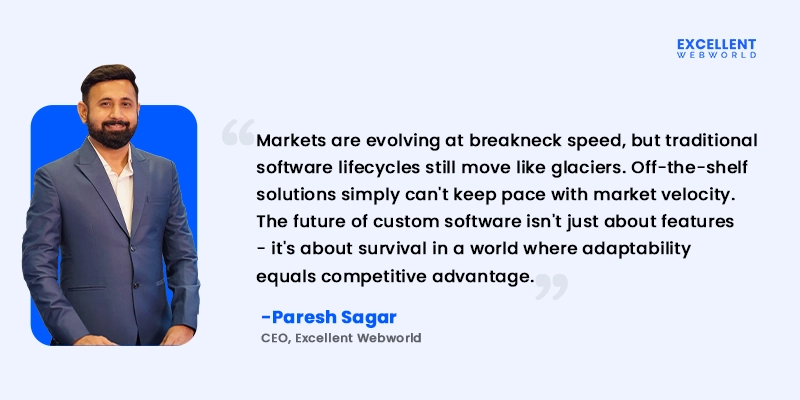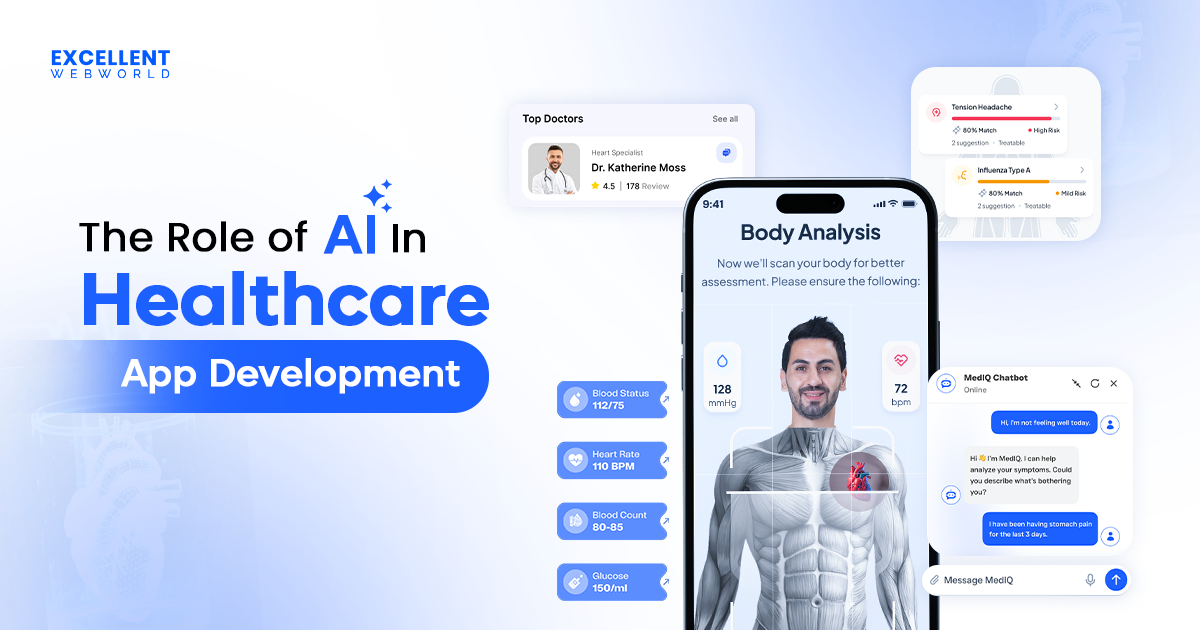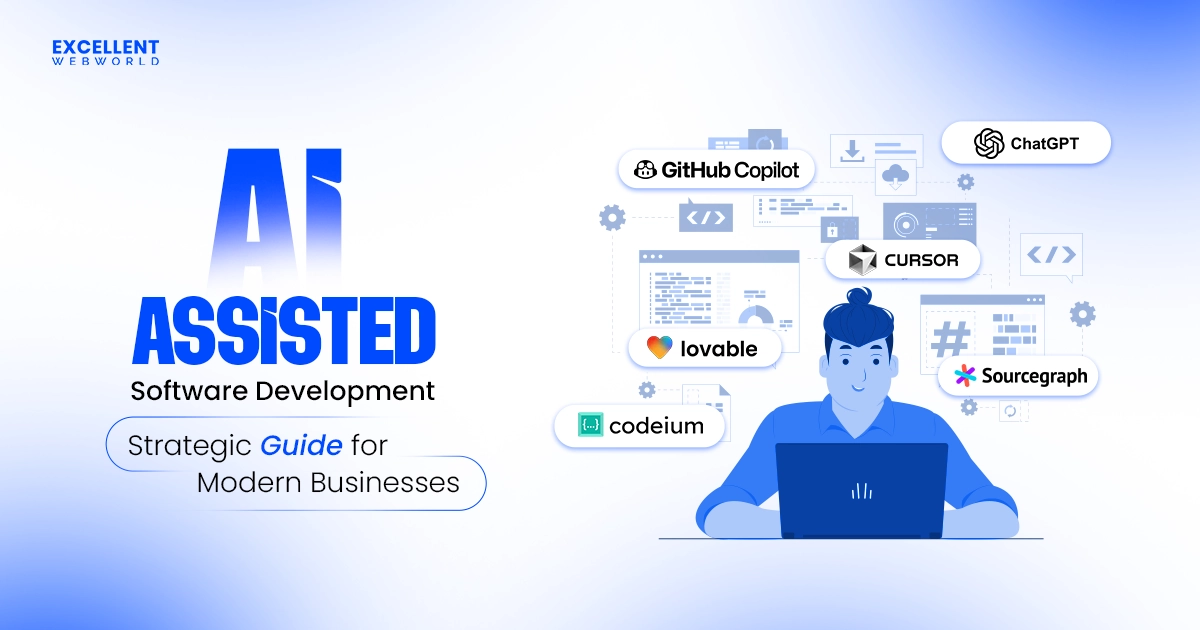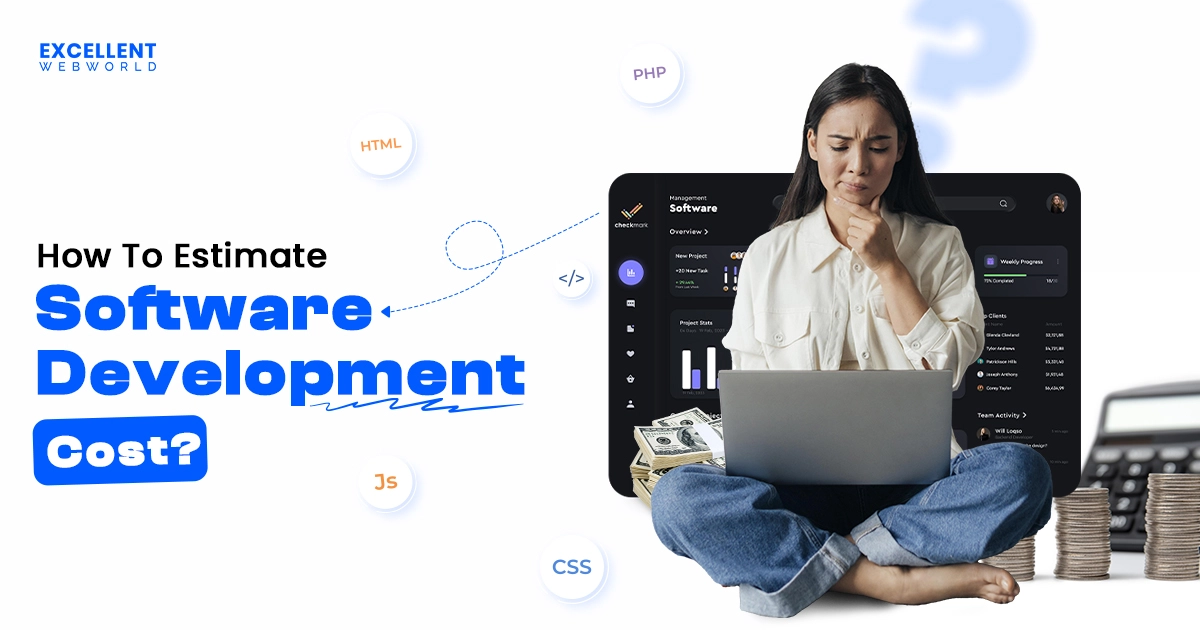The benefits of custom software development in 2025 go far beyond “nice-to-have” features. For CTOs and product leaders at growth-stage and enterprise companies, the real value lies in breaking free from vendor lock-in, reducing integration complexity, and building scalable, AI-ready systems.
Instead of relying on siloed data and fragile workarounds, modern software development creates interoperable, cloud-native ecosystems that reduce the total cost of ownership, enhance maintainability, and strengthen security and compliance.
Many tech leaders who partner with us for software development consulting report faster integration lead times and stronger data governance.
These benefits – ranging from scalability to competitive differentiation – can transform your technology from a burden into a long-term growth driver.
Executive Summary: Software development services still promise flexibility, control, and cost savings — but the stakes have completely shifted. Today, it’s about breaking free from vendor lock-in, eliminating integration hell, building AI-native architectures, and creating systems that scale without breaking. The right custom solution transforms your tech stack from daily frustration into a strategic advantage that competitors can’t replicate.
Why Custom Software Development Is Important? Exploring Key Benefits In 2025 & Beyond
Custom software development is important because it eliminates the gap between business velocity and technology capabilities. Purpose-built solutions provide the foundation for rapid scaling, seamless integrations, and competitive differentiation that generic software simply cannot deliver.
The digital-first economy demands immediate adaptation:
According to the U.S. Bureau of Economic Analysis, the digital economy is growing more than three times faster than overall GDP. Software has emerged as its single largest driver. This underscores why custom builds are no longer optional. They are now a core competitive moat.
The business software transformation affects your AI readiness, integration capabilities, and scaling ability. Adaptive enterprise leaders have gone beyond build vs buy software to building systems that adapt with them.
This section explores why custom development has become essential for staying competitive, profitable, and prepared for whatever comes next.
1. AI-Native Personalization & Predictive Capabilities
Your legacy systems offer basic personalization – custom fields, company logos, and user roles. That approach is dead.
Modern AI personalization reads your team’s behavior patterns. It learns how each person works. Then it changes the software to match their habits.
Predictive UX means your system thinks ahead through custom data integration and analytics to anticipate user behavior. When someone opens a dashboard, it shows the data they usually need. When they create reports, it suggests relevant metrics based on past choices.
Adaptive software reshapes itself for different users. Your finance team sees different workflows than your sales team. The interface adjusts automatically based on role and behavior.
Integrating AI in software development gives you:
“When our team built predictive analytics into a client’s fintech platform, we used our expertise in offshore software development to achieve incredible results. User stickiness increased 52% because the software anticipated their next moves. That’s retention you can’t buy with off-the-shelf tools.”
– Mayur Panchal (CTO, Excellent Webworld)
Only custom software development benefits deliver this level of intelligent adaptation. Generic cloud solutions can’t learn your specific business patterns.
2. Cybersecurity Resilience in a Zero-Trust World
Your current security setup might seem solid, but is it protecting your business in 2025?
Traditional security models relied on perimeter defenses. They assumed everything inside your network was safe. That approach doesn’t work anymore.
Modern threats come from everywhere, making a robust software development strategy essential. Your employees work remotely, your data lives in multiple clouds, and bad actors are already inside most networks.
Zero-trust security changes the game completely through effective software project planning. It treats every user, device, and connection as potentially risky. Nothing gets automatic trust.
Here’s what this means for your custom software:
One of the benefits of custom software development is complete control over these security features. You’re not waiting for your vendor to patch vulnerabilities.
Proactive risk mitigation becomes your default approach. Your system learns and adapts to new threats without human intervention. When breaches do occur, having established relationships with experienced incident response companies ensures rapid containment and recovery.
The advantages of custom software extend beyond basic protection. You get SOC integration that fits your exact workflow. Your compliance reports generate themselves.
This isn’t just about avoiding breaches anymore. It’s about building trust with your customers and staying ahead of regulations. By building security directly into your custom software, you can achieve the same level of robustness as a top-rated cybersecurity services provider.
3. Scalability for Global and Omnichannel Growth
Your business is ready to expand globally, but is your software architecture prepared for that leap?
Traditional scaling involved adding more servers as user numbers increased. Today’s global software scalability demands much more sophistication.
Modern software development frameworks with elastic architectures automatically adjust resources based on real demand. Unlike rigid software development models of the past, these systems handle Black Friday traffic spikes and quiet Tuesday mornings with equal efficiency.
Omnichannel readiness ensures consistent experiences across web, mobile, and in-store touchpoints. Your customers get seamless service regardless of how they connect.
The benefits of software development include built-in multi-tenant intelligence that manages different customer segments simultaneously. Your adaptive infrastructure handles various currencies, languages, and local regulations without breaking.
From Our Experience: “Through a strategic nearshore software development partnership, we helped a fintech client expand from the UAE to 12 countries in 18 months. Their borderless software processed transactions in multiple currencies while maintaining 99.9% uptime. Zero downtime during expansion.”
Modern custom solutions grow with your ambitions, not against them.
4. Seamless Integration with Emerging Tech
Your competitors are already experimenting with IoT sensors, AR experiences, and blockchain payments. Can your current system handle these integrations without a complete overhaul?
Traditional integration meant connecting two systems with basic data exchange. That approach creates bottlenecks when new technologies emerge.
Microservices integration changes everything. Your system becomes a collection of independent services that communicate through well-defined interfaces.
This future tech-ready backbone adapts to whatever comes next:
The API economy rewards businesses that can connect quickly. Your custom software design includes these connection points from day one.
Emerging tech adoption becomes your competitive advantage, not your technical debt. New tools seamlessly integrate into your existing custom software without disrupting its functionality.
This plug-and-play evolution aligns with emerging software project trends, meaning you’re ready for technologies that don’t even exist yet. Your architecture grows with innovation, not against it.
5. Operational Intelligence & Automation
Your operations team is overwhelmed with manual tasks, while competitors automate everything. Are you ready to stop playing catch-up?
Basic productivity meant faster data entry and better reports. Modern operational analytics transform your entire business into a self-running machine.
Business process automation with Gen AI handles the complex decisions your team makes daily. Purchase approvals, customer routing, and quality control happen without human oversight.
Your intelligent workflows connect seamlessly:
The real-time decision fabric processes millions of data points continuously. It identifies patterns that your analysts might miss and acts on them immediately.
Custom application software development embeds this intelligence directly into your systems. Generic tools force you to adapt your processes. Customer software development builds automation around your unique business rules.
While others manually review dashboards, your system identifies problems, evaluates solutions, and implements fixes autonomously. That’s operational intelligence in action.
6. Long-Term Total Cost Optimization
Your CFO questions every software expense because vendor costs keep climbing. What if your technology investment decreased operational costs over time?
Traditional cost-effectiveness focused on cheaper upfront development. Modern software TCO considers the entire lifecycle – maintenance, scaling, updates, and integrations.
Modular software development process changes the economics completely. You build components once and reuse them across multiple projects. Each new feature costs less because the foundation already exists.
AI-assisted maintenance eliminates expensive developer hours:
Cost elasticity means you pay only for the resources you use. Through flexible system software scheduling, serverless computing scales your customized software solution up during peak times and down during quiet periods, intelligently managing workload distribution to minimize infrastructure costs.
Operational cost decoupling breaks the traditional link between growth and IT expenses. When you develop custom software with cloud-native architecture, adding users doesn’t require adding servers.
This future-proof investment gets more valuable over time. While competitor software costs increase annually, your system becomes more efficient and cost-effective with each update.
In my experience, every dollar we save through elastic scaling creates lasting value for our clients. When we make smart infrastructure investments, we’re not just reducing project costs today. We’re building capabilities that let us deliver better margins on every future engagement.
– Mahil Jasani (COO, Excellent Webworld)
7. Data Ownership = Future Monetization Optionality
Your data sits locked in vendor systems while competitors monetize similar information streams. How much revenue potential are you surrendering to third-party platforms?
Traditional software meant accepting vendor data policies. You have functionality, but you’ve lost control over the valuable information your business generates.
Custom software applications change this dynamic completely. Every customer interaction, transaction pattern, and operational metric belongs entirely to you.
This ownership creates multiple revenue opportunities:
Customized development structures your data for maximum value extraction. Unlike vendor platforms that optimize for their business model, your system prioritizes your monetization strategy.
Custom-made software includes built-in analytics engines and API endpoints. Your data becomes a strategic asset, not just operational storage.
Gen AI amplifies this advantage significantly. Your proprietary datasets train models that competitors cannot replicate. This creates sustainable competitive moats based on unique data intelligence.
While others pay vendors for generic insights, you own the source of truth about your market.
8. Ecosystem & Platform Leverage
Your biggest competitors aren’t just selling software – they’re building ecosystems where others create value on their platform. When will you stop being a customer and start being the foundation?
Traditional custom solutions solved internal problems. Modern custom software for business creates platforms that generate revenue from external participants.
You build core primitives – APIs, data models, workflow engines – not finished features. Others extend your platform to meet their specific needs.
This ecosystem approach unlocks multiple revenue streams:
The advantages of custom software development include controlling the foundation while others build specialized layers. Your development costs decrease as ecosystem participants add functionality.
Cloud infrastructure makes platform effects accessible to mid-market companies. You don’t need a massive scale to attract partners and developers.
AI agents accelerate ecosystem adoption by automating integration documentation and providing intelligent API guidance. Your platform becomes self-extending.
Stop building every feature customers request. Start building the foundation so that they can customize themselves.
9. AI-Native Architecture
Most of the current system treats AI like an add-on feature. What happens when you need to swap models, route requests intelligently, or handle AI failures gracefully?
Traditional software bolted AI capabilities onto existing architectures. This approach creates bottlenecks when teams build AI models that evolve or fail unexpectedly.
A custom software solution designed for AI from day one handles these challenges seamlessly. Your architecture anticipates model changes and routes requests to the best available option.
Key AI-native design patterns include:
Tailored software built this way adapts to new AI capabilities without expensive rewrites. When GPT-6 launches, your system switches models with a configuration change, not a development project.
An AI consulting company recommends building abstraction layers between your business logic and AI models. This separation protects your investment when the AI landscape shifts.
Your competitors will spend months retrofitting legacy systems for new AI capabilities. Your AI-native foundation stays ahead of every model release and architectural change.
10. Operational Observability as a Product
Your enterprise customers are asking for SLA guarantees, but your current vendor can’t provide the performance data to back them up. How much revenue are you losing to competitors who can prove their reliability?
Traditional systems hide operational metrics behind vendor dashboards. Innovative companies now expose performance data as a customer-facing product feature.
Developing custom software means you own every performance metric your customers care about. Response times, uptime percentages, and processing speeds become transparent selling points.
This visibility unlocks premium revenue streams:
Your custom software application tracks meaningful metrics from day one. Every transaction generates data that builds customer confidence in your platform.
Tailored software development includes observability as a core business requirement, not an afterthought. Cloud monitoring infrastructure scales with your customer growth automatically.
AI-powered analytics transform raw performance data into customer success stories. Your operational excellence becomes proof of value that justifies premium pricing and long-term contracts.
11. Sustainability & Cost-per-Compute Optimization
Your board is demanding ESG reporting while your cloud bills keep climbing. Can you prove your technology investments support both profitability and environmental responsibility?
Traditional software focused on functionality over efficiency. Modern customized software application design prioritizes energy optimization as a core business requirement.
Software customization includes built-in efficiency patterns that reduce compute costs and carbon footprint simultaneously. Smart caching, model distillation, and resource pooling become architectural fundamentals.
Energy-optimized features deliver measurable benefits:
Your sustainability metrics become competitive advantages for enterprise sales. AI-powered optimization continuously tunes system performance to minimize resource waste.
Your infrastructure learns usage patterns and automatically adjusts capacity to reduce both costs and emissions. This approach transforms sustainability from a compliance burden into a profit center that strengthens customer relationships.
How Different Industries Benefit from Custom Software Development?
Every industry has unique compliance requirements and operational challenges that generic software cannot address effectively.
Different sectors need specialized solutions that align with their regulatory environment and business models. These custom software examples demonstrate how tailored development creates competitive advantages across various markets.
| Industry | Benefits of Using Custom Software | Unique Capabilities |
|---|---|---|
| Healthcare | HIPAA-compliant patient data management with proprietary diagnostic scoring | Medical device integration, telemedicine platforms, and AI-powered treatment recommendations |
| Fintech | Real-time fraud detection with custom compliance rules | Blockchain payment processing, automated KYC verification, and a regulatory reporting dashboard |
| Retail/eCommerce | Personalized shopping experiences with unified customer profiles | Omnichannel inventory management, dynamic pricing algorithms, and AR product visualization |
| Real Estate | Automated property valuation with market intelligence | MLS data integration, virtual tour platforms, and predictive market analysis |
| Education | Adaptive learning paths with student performance tracking | LMS integration, plagiarism detection systems, and personalized curriculum delivery |
| Travel | Dynamic pricing optimization with multi-channel booking | GDS connectivity, loyalty program management, and real-time availability updates |
| Automotive | Predictive maintenance with IoT sensor data | Fleet management systems, connected car platforms, and autonomous driving capabilities |
| Entertainment | Content recommendation engines with rights management | Streaming infrastructure, digital asset protection, and audience analytics platforms |
| Restaurant & Hotel | Integrated POS systems with reservation management | Kitchen display systems, guest experience apps, and revenue management tools |
How Custom Software Brings Business Benefit In The Long Run? (A Hypothetical Example)
Imagine you’re running a mid-size company with 200 employees. You process 50,000 transactions monthly and generate $3 million in annual revenue. You need software to handle customer management, billing, inventory, and reporting.
Software Cost Breakdown: Traditional vs Custom Software
You have two choices: buy existing software or build a custom software system. Smart software project estimation helps you compare both options realistically before making this critical decision.
Now, let’s understand how both options give rewards over a 3-year cycle.
TRADITIONAL SOFTWARE
| Component | 1-Year Cost | 2-Year Cost | 3-Year Cost | Total Cost |
|---|---|---|---|---|
| Software licenses (200 users) | $50,000 | $55,000 (10% increase) | $63,250 (15% increase) | $168,250 |
| Setup and training | $15,000 | – | – | $15,000 |
| Integration tools | $20,000 | – | – | $20,000 |
| New features/modules | – | $25,000 | $30,000 | $55,000 |
| Additional users (20 new) | – | $15,000 | – | $15,000 |
| Advanced reporting tools | – | – | $16,750 | $16,750 |
| TOTAL | $85,000 | $95,000 | $110,000 | $290,000 |
CUSTOM SOFTWARE
| Component | 1-Year Cost | 2-Year Cost | 3-Year Cost | Total Cost |
|---|---|---|---|---|
| Planning and design | $10,000 | – | – | $10,000 |
| Development work | $50,000 | – | – | $50,000 |
| Integration tools | $10,000 | – | – | $10,000 |
| Testing and launch | $15,000 | – | – | $15,000 |
| Bug fixes and updates | – | $10,000 | $10,000 | $20,000 |
| New features requested | – | $10,000 | $10,000 | $20,000 |
| TOTAL | $85,000 | $20,000 | $20,000 | $125,000 |
ROI Breakdown: Traditional vs Custom Software
As we have assumed earlier, your software helps you generate $3 million in revenue each year. Based on that, the ROI calculation will be as follows:
| Traditional Software | Custom Software | |
|---|---|---|
| You invest | $290,000 | $125,000 |
| Business revenue (3 years) | $9,000,000 | $9,000,000 |
| Your profit | $8,710,000 | $8,875,000 |
| Net Gain | $8,420,000 | $8,750,000 |
| ROI | 2,903.45% | 7,000.00% |
Experience the Benefits of Custom Software with Excellent Webworld
Your architecture won’t wait for vendor roadmaps. Every day you delay, competitors gain ground with AI-ready systems.
What if you could build exactly what your business needs? We’ve transformed 200+ fragmented architectures into AI-ready powerhouses.
Here’s what we at Excellent Webworld, an AI-powered custom software development company, bring to your table:
You don’t need another vendor promising the world. You need a partner who understands your technical challenges.
Our development team has built systems for fintech, healthcare, and logistics leaders just like you. We know what works and what doesn’t.
Ready to future-proof your architecture? Book your free Architecture Health Check today. We’ll audit your current setup and provide you with a custom software roadmap.
FAQs About Custom Software Development
Consider custom software if existing solutions don’t meet your specific workflow needs, you need unique integrations, or off-the-shelf options would require expensive modifications. If standard software can handle 80% of your requirements efficiently, stick with it.
Custom software isn’t automatically future-proof and will need regular updates for security, compatibility, and new features. However, you have complete control over the upgrade timeline and can prioritize changes that matter most to your business.
Custom software development costs in 2025 vary widely, ranging from $20,000 to over $1 million, depending on the project’s complexity and scope. Smaller, basic applications can fall within the $20,000 – $100,000 range, while larger, more complex enterprise solutions can easily exceed $500,000 and even reach $1 million or more.
Yes, custom software can reduce TCO by eliminating recurring license fees, reducing manual work through automation, and avoiding the costs of multiple separate tools. The savings typically become apparent after 3-5 years once development costs are recouped.
Main risks include budget overruns, delayed timelines, and technical issues. Mitigate by choosing experienced developers, defining precise requirements upfront, planning phased releases, and maintaining realistic budgets with 20-30% contingency funds.
AI-native architectures integrate machine learning from the ground up, enabling more intelligent automation, predictive features, and adaptive user experiences. This requires planning for data collection, model training infrastructure, and continuous learning capabilities during the initial design phase.
Look for developers with proven experience in your industry, strong portfolios of similar projects, and clear communication skills. Check references, ensure they follow modern development practices, and verify they offer ongoing support after launch.

Article By
Paresh Sagar is the CEO of Excellent Webworld. He firmly believes in using technology to solve challenges. His dedication and attention to detail make him an expert in helping startups in different industries digitalize their businesses globally.




